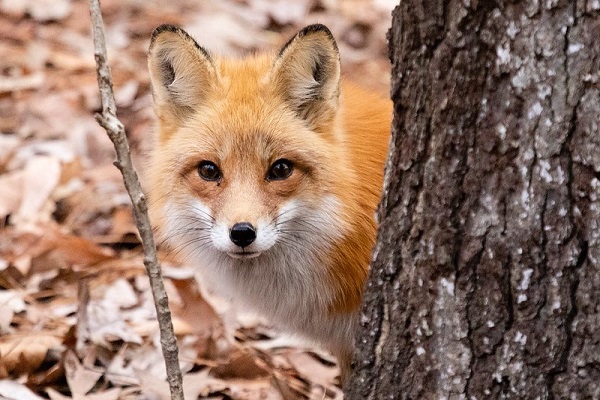Foxes are undeniably one of the fiercest animals you’ll meet in the wild. They are fearless wild dogs with steely bold eyes, powerful jaws, and sharp claws. But despite this reputation, they still manage to balance their adorable aura. Somehow, these animals tell you how playful they are.
Foxes also have some rather unique and resourceful characteristics. In addition to running at speeds of up to 30 mph, they can jump vertically up to three feet! They can rotate their ears up to 180 degrees, which helps them pinpoint the sound source.
However, with all the similar-looking members of the Canidae family, do you know how these animals look?
Let’s identify the characteristics of foxes.

The distinct characteristics of foxes
There are around 37 species of foxes, and they come in different shapes and sizes. The smallest is the fennec fox which only grows 14 to 16 inches tall and weighs 2-3 pounds. On the other hand, the largest is the red fox which can grow up to 22 inches tall and weigh up to 15 pounds.
Despite their different body statistics, these animals have unique features that differ from wild animals. Here are the distinctive characteristics of foxes.
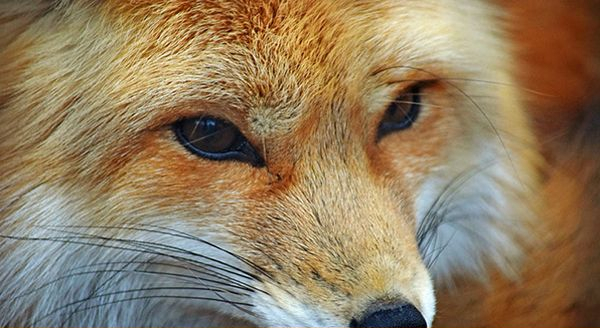
Fox’s Eyes are like cat’s eye
You may often see foxes at a distance fleeing from disturbances in the field. If you observe them, they move very quickly, squeeze through fences, make high leaps, and run along walls. They do all of this in such a considerably fast manner. This only means they have solid visual acuity at short range.
Foxes have vertical pupils (slits) that open wide in low light and close to a horizontal slit in bright light, which gives them excellent night vision.
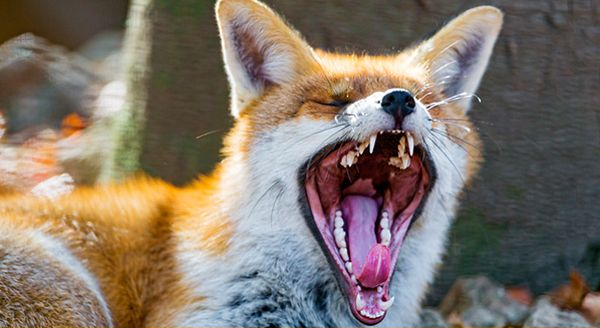
Teeth
The adult fox has 42 teeth. Their 42 teeth constitute 16 premolars, 12 incisors, 10 molars, and 4 canines. They are sharp and help them to eat their prey easily. If we are to determine a fox’s dental structure, they have 1 canine, 3 incisors, 4 premolars, and 2 molars on top and 3 on the bottom of each side of their jaw.
Because foxes are carnivores, they are equipped with strong carnassial pairs. They are lengthy and pointed to aid them in gripping their prey’s meat. This strong structure can also be observed in wolves since it’s a distinct feature for meat-eaters.
Ears
Fox’s ears are large, pointy, and black-tipped. They can hear small animals moving underground from up to 100 meters away! It is very sensitive.
While most foxes have ears, as described above, there are always ones with distinct characteristics, coming from different species. This includes bat-eared foxes, which from the name, describes their ears are like those of bats. The ears of this fox species are larger than the normal fox’s, and its inner surface is black.
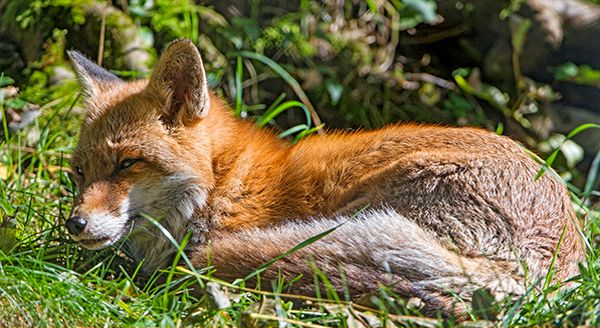
Bushy Tail
We know you see it, too! Foxes resemble dogs. But, there is one noticeable difference- their tails. The tail is long, fluffy, and black-tipped. It acts as a furry scarf that keeps them warm in the cold winter months. Not to mention, it also aids them while they are running and making sudden turns.
A fox’s tail is very important to them. The long tail helps them to maintain balance while running at high speeds and is also used as a warm blanket when sleeping.
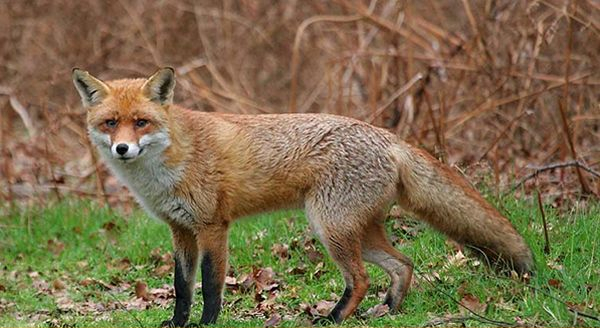
Size
Adult foxes typically weigh 5 to 7 kg (10-15 pounds) and measure 36 to 42 inches on average. The 14 to 16 inches of it constitutes their shoulder and their tails.
Foxes come in different sizes. The smallest fox species is the fennec fox, which only weighs 1.5 to 3.5 pounds and measures 9 to 16 inches in length (shoulder to rump). On the other hand, the largest is the red fox, which can weigh up to 19 pounds and have a body length of up to 31 inches (shoulder to rump).
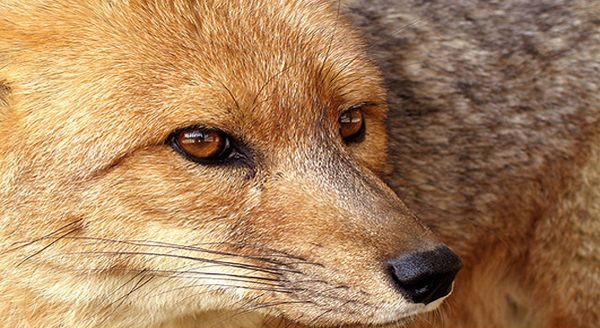
Foxes Whiskers are not just found on the face
Did you know that foxes have whiskers not just on their face but also on their legs? It’s true! These long, thin hairs help them determine if an area or opening is too small for them to fit through.
They use their whiskers as sensors, much like a cat does. The whiskers are very sensitive and can detect even the slightest movement in the air. This allows them to determine the location of their prey, even if it is hidden.
Foxes have different fur
Foxes have two different types of fur. The first type is called guard hairs. These are the long, stiff hairs that you can see. They protect the fox from the cold and from getting hurt.
The second type of fur is called underfur. It is soft and thick and grows close to the skin, which keeps the fox warm in the winter. Their underfur is a rich reddish brown, and their legs and ears are black.
Elongated Muzzle
The muzzle of the fox is long and pointed. This helps them to be very successful hunters. The muzzle also has a lot of whiskers, which helps the fox to feel things in the dark and to know when they are close to something.
An extra toe on their forepaws
Did you know that foxes have an extra toe on their forepaws? This toe is called the dewclaw, and it helps the fox to grip things better. It also allows them quickly turn when they are running.
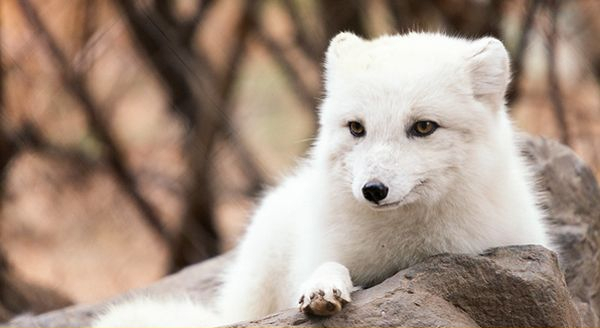
Characteristics of an Arctic Fox
The arctic fox has many adaptations that help it to survive in the cold. First, the arctic fox has a thick coat of fur that keeps it warm in the most frigid weather. The fur is white, which helps it to blend in with the snow.
Second, the arctic fox has a short muzzle and small ears. This helps reduce the amount of heat lost from the body. Third, the arctic fox has a thick layer of fat under its skin. This helps to keep it warm and to store energy.
Arctic foxes also have large paws with furry pads. This helps it to walk on the snow without sinking down.

Characteristics of a Gray Fox
The gray fox is a little smaller than the red fox. It has a coat of gray fur with black streaks, which appears like a sprinkled pepper. The belly and chest are usually white, and its sides are reddish brown. Their bushy tail seems different from others because of their striped nature. The gray fox may look like an island fox, as they share the same peppery back.
Amazingly, gray foxes are the only species of fox that can climb trees. It has sharp claws that help it to grip the tree trunk. They occasionally forage their food there and, sometimes, take their rest.
Gray foxes are determined solitary hunters and eat a variety of food. Small mammals, like voles, mice, and eastern cottontail rabbits, make up a massive part of their diet.

The Different characteristics between Red Fox and Fennec Fox
The Fennec fox is probably the cutest fox you’ll ever meet. They are the smallest fox species, with big ears and sandy-colored or cream-colored fur. The fennec fox has enormous ears similar to a bat-eared fox, pointed snouts, and tiny faces.
On the other hand, the red fox is the largest fox species and has red fur across its tails, back, sides, and tail. While other foxes have black-tipped tails, these have white, making them easily recognizable.
Both Fennec foxes and red foxes have long muzzles. But the Fennec fox has smaller teeth than the red fox. The Fennec fox is native to the Sahara Desert in North Africa, while the red fox is found throughout North America, Europe, and Asia.
Need Help With Fox Problem?
Despite being adorable to look at, foxes hold a sneaky behavior underneath. They can cause damage with their agile nature, running and climbing over things.
If you have a problem with foxes on your property, AAAC Wildlife Removal can help. We are experts at removing foxes and other wildlife animals. We will work with you to create the best plan for your situation.
Conclusion
Foxes are quick and naturally curious animals. While they display a sly and cunning personality, they turn out to be protective and loyal creatures. And like other animals, foxes are interesting beings with many unique characteristics. Their long tails help them balance running and keep them warm when sleeping. They have different fur on their bodies that helps to protect them from the cold and from getting hurt. They also have whiskers on their legs that help them to find prey in the dark.
Foxes are adaptable and independent creatures that can live in many different habitats. They are good hunters and are very fast. They also have an extra toe on their feet that helps them to grip things better.
With all these remarkable traits, they can survive in the wild and have become one of the most popular animals in the world. But if you spot a wild fox, it’s better to keep your distance and appreciate them at a glance.
To learn more about the unique characteristics and behaviors of foxes, click here: fox characteristics.
FAQs
Are there domesticated foxes?
Yes, there are domesticated foxes. They are bred to be docile from birth, unlike a tame fox who has only tolerated the presence of humans. They are not as common as dogs or cats, but they can make good pets.
What do foxes eat?
Foxes are opportunistic predators and will eat almost anything they can find. Their diet includes small mammals, birds, reptiles, frogs, rodents, insects, fruit, and berries. Like coyotes, they also act as scavengers. They take delight in eating carrion or the remains of dead animals.
How many pups can foxes have?
After successful gestation of 51 to 53 days, females will give birth to an average of 4 to 5 pups. While they can dig their burrow, they usually utilize an old abandoned den from woodchucks. Males take part in raising young.







